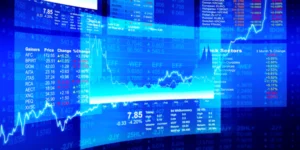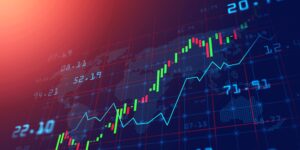
Welcome to the exciting world of Forex trading! If you’re curious about what Forex Trading for Beginners is all about and how you, as a beginner, can dip your toes into this dynamic market, you’re in the right place. Forex trading, short for foreign exchange trading, is the process of buying and selling currencies with the aim of making a profit. It’s like a global marketplace where currencies are traded around the clock, presenting endless opportunities for those willing to learn the ropes. In this guide, we’ll break down the essentials, step by step, so you can embark on your Forex Trading for Beginners journey with confidence and clarity.
What Happens if Beginners Dive into Trading Without First Gaining a Solid Understanding of Forex?
Without proper knowledge, Forex trading can quickly become a minefield of confusion and losses. Just like any skill, successful trading requires education and practice. Rushing into the market blindly can lead to costly mistakes, financial setbacks, and dashed hopes. But fear not, for by arming yourself with the right information, you can navigate the Forex landscape wisely and avoid the common pitfalls that ensnare uninformed traders.
Introduction To Forex Trading
What is Forex Trading and how does it work?
Forex trading, short for foreign exchange trading, is the process of buying and selling currencies in the foreign exchange market with the aim of making a profit. Currencies are traded in pairs, where one currency is exchanged for another at an agreed-upon rate. The most commonly traded currencies include the US Dollar (USD), Euro (EUR), Japanese Yen (JPY), British Pound (GBP), and more. Unlike traditional stock markets, the Forex market operates 24 hours a day, five days a week, due to its global nature and the involvement of major financial centers across different time zones.
Why Should Beginners Learn About Forex?
For Forex trading beginners, delving into the world of Forex trading offers an opportunity to participate in a highly liquid and dynamic market. Learning about Forex can open doors to potentially diversify investment portfolios beyond traditional avenues. Additionally, as a decentralized market, Forex trading doesn’t require a physical location or a centralized exchange, providing accessibility for traders from around the globe.
The Potential and Risks of Forex Trading for Beginners
Forex trading presents enticing prospects for profit, thanks to the volatility of currency prices. While beginners might envision the possibilities of substantial gains, it’s equally important to understand the inherent risks. The dynamic nature of the market can lead to rapid price fluctuations, which could lead to unexpected losses if not managed carefully. This risk is especially pronounced for inexperienced traders who might fall prey to emotional decision-making.
In essence, while the potential rewards of Forex trading are alluring, beginners must approach the market with realistic expectations, a solid understanding of the fundamentals, and a robust risk management strategy. By building a strong foundation of knowledge and respecting the risks, beginners can begin their journey into Forex trading with caution and confidence.
What Is the Forex Market?
The Forex market, also known as the foreign exchange market, is a global marketplace where currencies are traded. It’s the largest and most liquid financial market in the world, where individuals, institutions, and governments buy and sell currencies with the goal of making a profit. Unlike traditional stock markets, the Forex market operates around the clock, five days a week, due to its decentralized nature and the involvement of major financial centers worldwide.
How to Become a Forex Trader?
Becoming a Forex trader as a beginner involves a step-by-step approach. Start by educating yourself about the basics of Forex trading, including currency pairs and their dynamics. Choose a trading style that suits your personality and schedule. Select a reliable broker that offers educational resources and demo accounts for practice. Develop a trading plan outlining your goals, risk tolerance, and strategies. Remember, patience, discipline, and continuous learning are key to navigating this dynamic market successfully. Becoming a successful Forex trader as a beginner requires a clear path forward. Follow the below guidance to set yourself up for a promising start.
How Does the Forex Market Work?
The Forex market functions as a decentralized global marketplace for currency trading. It operates 24 hours a day, five days a week, due to its international nature and the involvement of major financial centers across different time zones. At its core, Forex trading involves the exchange of one currency for another, with the aim of making a profit based on the fluctuations in their relative values.
In the Forex market, currencies are traded in pairs. Each pair consists of a “base” currency and a “quote” currency. For instance, in the EUR/USD pair, the Euro is the base currency, and the US Dollar is the quote currency. The exchange rate indicates how much of the quote currency is needed to purchase one unit of the base currency. When you engage in a trade, you are essentially speculating on whether the base currency will appreciate or depreciate in value against the quote currency.
The market’s movements are influenced by a multitude of factors. Economic indicators such as Gross Domestic Product (GDP), inflation rates, and employment data can impact currency values. Geopolitical events, interest rate decisions by central banks, and market sentiment also play pivotal roles. These factors create a constantly changing environment where currency prices can experience rapid shifts. Traders aim to capitalize on these price movements by buying a currency pair when they expect the base currency to strengthen and selling it when they anticipate its decline. By understanding these dynamics and making informed predictions, traders strive to generate profits within this dynamic market.
Getting Started in Forex Trading
Understanding Currency Pairs
At the heart of Forex trading are currency pairs, the building blocks of every trade. A currency pair consists of two currencies: the base currency and the quote currency. The base currency is the one you’re buying or selling, while the quote currency is what you’re using to make the transaction. When you see a currency pair like EUR/USD, the Euro (EUR) is the base currency, and the US Dollar (USD) is the quote currency. The exchange rate tells you how much of the quote currency is needed to purchase one unit of the base currency. Understanding currency pairs is essential because it’s the foundation on which you’ll make your trading decisions.
Basics of Buying and Selling in the Forex Market
Trading in the Forex market involves buying one currency while simultaneously selling another. When you enter a trade, you’re essentially betting that the base currency will appreciate in value against the quote currency, leading to potential profits. If you believe the Euro (EUR) will strengthen against the US Dollar (USD), you would buy the EUR/USD currency pair. On the other hand, if you think the USD will gain strength, you might sell the EUR/USD pair. The difference between the buying and selling prices is known as the “SPREAD,” and it represents the broker’s fee for facilitating the trade.
Exploring Major, Minor, and Exotic Currency Pairs
Currency pairs are categorized into three main groups: major, minor, and exotic. Major pairs involve the most traded currencies globally and have high liquidity. These pairs usually include the US Dollar and another major currency like the Euro, Japanese Yen, or British Pound. Minor pairs exclude the US Dollar but still involve major global currencies which are known as Forex currency. Exotic pairs involve one major currency and one from an emerging or smaller economy. These pairs tend to have lower liquidity and higher spreads. As a beginner, focusing on major and minor pairs might be a prudent starting point, as they tend to be more stable and less volatile compared to exotic pairs.
Essential Concepts for Beginners
Pips, Lots, and Leverage: What You Need to Know
Understanding essential terms like pips, lots, and leverage is crucial for beginners entering the Forex market:
- Pips: A pip, short for “percentage in point,” represents the smallest price movement in a currency pair. It’s usually the last decimal place of the exchange rate. For example, if the EUR/USD pair moves from 1.2000 to 1.2001, it’s a one-pip movement.
- Lots: A lot refers to the size of your trade. Standard lots are typically 100,000 units of the base currency. Mini lots (10,000 units) and micro lots (1,000 units) allow beginners to trade with smaller positions.
- Leverage: Leverage allows traders to control larger positions with a smaller amount of capital. While it can amplify profits, it also magnifies losses. Common leverage ratios are 10:1, 50:1, and even higher. Beginners should use leverage cautiously and consider its potential risks.
Bid and Ask Prices Demystified
Understanding bid and ask prices is essential for grasping how trades are executed:
- Bid Price: This is the price at which the market is willing to buy a currency pair from you. It’s the price you receive when selling.
- Ask Price: The ask price is the price at which the market is willing to sell a currency pair to you. It’s the price you pay when buying.
The difference between the bid and ask prices is called the “spread.” Brokers earn their revenue from the spread, so it’s a factor to consider when entering trades.
Calculating Profits and Losses in Forex Trading
Understanding how to calculate profits and losses is fundamental:
- To calculate profits, you subtract the entry price from the exit price and multiply by the position size.
- To calculate losses, the process is the same, but subtract the exit price from the entry price.
Additionally, learning about “take-profit” and “stop-loss” orders is essential. These tools help manage risk by automatically closing trades at predetermined price levels.
Mastering these concepts empowers beginners to navigate the Forex market with greater confidence. It sets the stage for informed decision-making and effective risk management, two critical components of successful trading.
Analyzing the Forex Market
Analyzing the Forex market is the most important thing in Forex market as a beginner you can follow the following steps to Analyze the Forex Market
Fundamental Analysis: Economic Indicators and News
Analyzing the Forex market involves two main approaches: fundamental and technical analysis. Here’s a breakdown of each:
- Fundamental Analysis: This approach involves evaluating economic indicators and news to understand the underlying factors influencing currency movements. Economic indicators like GDP, employment data, inflation rates, and central bank decisions can significantly impact currency values. News events, geopolitical developments, and trade policies also play a vital role. By staying informed about these factors, beginners can make more informed trading decisions.
Introduction to Technical Analysis and Charts
- Technical Analysis: Technical analysis focuses on price charts and patterns to predict future price movements. It’s based on the assumption that historical price data can provide insights into future trends. Beginners should familiarize themselves with key technical concepts such as candlestick patterns, moving averages, and oscillators. These tools help identify trends, reversals, and potential entry and exit points.
How to Use Trends, Support, and Resistance for Beginners
- Trends: Identifying trends is crucial in Forex trading. An uptrend consists of higher highs and higher lows, while a downtrend features lower highs and lower lows. Beginners can use trendlines to visualize and confirm trends.
- Support and Resistance: Support is a price level where a currency pair tends to stop falling and might even reverse. Resistance is the opposite – a level where a currency pair tends to stop rising. These levels are vital for setting entry and exit points.
Combining fundamental and technical analysis gives beginners a comprehensive understanding of the market. While fundamental analysis helps grasp the bigger picture, technical analysis provides insights into short-term price movements. By learning both approaches, beginners can make more well-rounded trading decisions.
Creating Your First Forex Trading Strategy
Different Trading Styles: Which One Suits You?
As a beginner, selecting a trading style that aligns with your personality and goals is crucial:
- Day Trading: Involves opening and closing positions within the same trading day. Requires close monitoring of the market and quick decision-making.
- Swing Trading: Positions are held for several days to capture price swings. More time flexibility compared to day trading.
- Position Trading: Longer-term trades held for weeks or months. Suitable for those with less time for active monitoring.
The Importance of Setting Goals and Risk Tolerance
Before crafting a trading strategy, set clear goals and define your risk tolerance:
- Goals: Determine what you aim to achieve through Forex trading. Whether it’s supplemental income, building wealth, or learning the market, clear goals guide your strategy.
- Risk Tolerance: Assess how much risk you’re comfortable taking on each trade. A risk management strategy helps protect your capital from significant losses.
Building a Basic Trading Plan for Beginners
A trading plan is your roadmap to success. Here’s how to create a basic plan:
- Define Your Strategy: Outline which trading style you’ll use and the indicators or patterns you’ll rely on for making decisions.
- Set Entry and Exit Rules: Determine the conditions that signal entry and exit points for your trades.
- Position Sizing: Decide how much of your capital you’ll risk on each trade. Follow the 1-2% rule – risking only 1-2% of your capital on a single trade.
- Risk Management: Set stop-loss and take-profit levels for each trade to manage risk and protect profits.
- Regularly review your trading plan and make adjustments based on your performance and market conditions.
Creating a trading strategy requires patience and practice. As a beginner, start with a simple strategy and gradually refine it as you gain experience and insights into the market. Remember, consistency and discipline are key to success in Forex trading.
Choosing the Right Broker for Beginners
Understanding the Role of Forex Brokers
Forex brokers act as intermediaries between you and the Forex market. They facilitate your trades, provide trading platforms, and offer access to various currency pairs. Brokers earn revenue through spreads – the difference between the bid and ask prices. Given their pivotal role, selecting a reliable and reputable broker is crucial for beginners.
Factors to Consider When Selecting a Broker
Choosing the right broker involves careful consideration of several factors:
- Regulation and Security: Opt for a broker regulated by recognized authorities. Regulation ensures a level of accountability and adherence to industry standards.
- Trading Platforms: User-friendly trading platforms are essential. Ensure the platform provides necessary features, charts, and tools for effective trading.
- Spreads and Fees: Compare spreads and fees across different brokers. Low spreads can significantly impact your trading costs.
- Educational Resources: A broker that offers educational materials, webinars, and tutorials can be valuable for beginners.
- Customer Support: Access to responsive customer support is crucial for addressing any issues promptly.
- Demo Accounts: Practicing Without Risk
Demo accounts are an invaluable tool for beginners. They allow you to practice trading with virtual money in a real-market environment. It’s a risk-free way to apply your trading strategy, get familiar with the platform, and build confidence before using real funds.
By carefully evaluating these factors and utilizing demo accounts, beginners can ensure they choose a broker that aligns with their needs and goals. Remember, your broker is your partner in navigating the Forex market, so making an informed choice is essential.
Which Currencies Can I Trade in?
The Forex market offers a vast array of currency pairs for trading. Major currency pairs include widely traded currencies like the US Dollar (USD), Euro (EUR), Japanese Yen (JPY), and British Pound (GBP). Minor currency pairs exclude the USD but involve other major currencies. Exotic currency pairs involve one major currency and one from a smaller or emerging economy. These options allow beginners to diversify their trading portfolio and choose pairs that align with their market insights and trading strategies.
Charts Used in Forex Trading
Charts play a vital role in Forex trading as they provide visual representations of price movements over time. Two common types of charts used are line charts and candlestick charts:
- Line Charts: Line charts connect closing prices of a currency pair with a line. They offer a simplified view of price trends but lack the detailed information found in other chart types.
- Candlestick Charts: Candlestick charts provide a more comprehensive picture. Each candlestick represents a specific time frame and displays the opening, closing, high, and low prices of that period. Different candlestick patterns convey valuable insights into price trends and potential reversals.
Traders often use technical analysis tools like moving averages, trendlines, and indicators in conjunction with these charts to make informed trading decisions. Familiarity with different chart types and analysis techniques empowers beginners to interpret market movements and plan their trades effectively.
Pros and Cons of Trading Forex
Trading Forex offers exciting opportunities but comes with its own set of advantages and challenges:
Pros:
- High Liquidity: The Forex market is the most liquid financial market globally, ensuring smooth execution of trades with minimal slippage.
- Accessibility: The market operates 24/5, allowing traders to participate from around the world at their preferred times.
- Diverse Trading Options: With numerous currency pairs available, traders can diversify their portfolios and find opportunities in various market conditions.
- Leverage: Forex trading offers high leverage, allowing traders to control larger positions with a smaller amount of capital. This can amplify profits, but it’s important to use leverage cautiously.
- Potential for Profit: The market’s volatility creates opportunities for profit, particularly when supported by effective analysis and risk management strategies.
Cons:
- High Risk: The same volatility that offers profit potential can also lead to significant losses. Inexperienced traders may struggle to manage risk effectively.
- Complexity: The Forex market’s intricacies and constant fluctuations can overwhelm beginners. A thorough understanding of its mechanics is essential.
- Emotional Pressure: Emotional decision-making can lead to impulsive trades and losses. Traders need to develop discipline and stick to their trading plans.
- Scams and Unregulated Brokers: The decentralized nature of the market makes it susceptible to scams and unregulated brokers. Careful research is necessary to choose a reputable broker.
- Learning Curve: Becoming proficient in Forex trading requires time, dedication, and continuous learning. Many beginners face a steep learning curve.
As a beginner, understanding both the potential benefits and the risks associated with Forex trading is essential. By approaching the market with realistic expectations and a commitment to learning and risk management, traders can increase their chances of long-term success.
Forex Trading for Beginners Free Courses and Webinars
Forex trading for beginners eager to learn the ropes of Forex trading, an array of free courses and webinars are available to provide valuable insights and education:
Forex Trading For Beginners Online Courses:
- Investopedia: Offers a comprehensive range of articles, tutorials, and videos covering Forex trading basics to advanced strategies.
- Babypips: Provides an interactive online course designed for beginners, complete with quizzes and practical exercises to enhance learning.
- DailyFX Education: Offers a variety of free resources, including trading guides, webinars, and articles covering different aspects of Forex trading.
Webinars Forex Trading For Beginners:
- com Webinars: Conducts regular webinars on various topics, including market analysis, trading strategies, and risk management.
- FXStreet Webinars: Features live webinars hosted by experienced traders, covering technical analysis, trading psychology, and more.
- IG Academy: Offers live and recorded webinars on a wide range of trading topics, suitable for both beginners and more experienced traders.
These free resources provide beginners with an excellent starting point to build a strong foundation in Forex trading. Remember that consistent learning and practice are key to improving your skills and understanding of the market.
Conclusion: Starting Your Forex Trading Journey
As you embark on your Forex trading journey as a beginner, it’s important to reflect on the valuable insights you’ve gained:
Recap of Key Takeaways for Forex Trading for Beginners
- Knowledge is Power: Understanding the basics of Forex trading, currency pairs, and market analysis forms the foundation of success.
- Choosing Wisely: Carefully selecting a reputable broker, defining your trading style, and setting clear goals are vital steps.
- Risk Management: Prioritizing risk management through position sizing, stop-loss orders, and disciplined trading is essential to safeguard your capital.
- Continuous Learning: The Forex market is dynamic and ever-evolving. Committing to continuous learning and staying updated on market trends is crucial.
Encouragement to Begin Your Forex Trading Adventure
Starting your Forex trading journey is an exciting venture filled with potential opportunities. While challenges may arise, remember that every successful trader was once a beginner facing the same uncertainties. Approach the market with curiosity, dedication, and a growth mindset.
Embracing Learning and Progress in the Forex Market
Embrace the reality that success in Forex trading is a journey, not a destination. Celebrate small wins, learn from losses, and remain patient during the learning curve. Forex trading is a skill that evolves over time. As you encounter obstacles and make strides, remember that continuous progress is the true measure of success.
With the insights you’ve gained, you’re well-equipped to navigate the Forex market as a beginner. Stay committed to your goals, remain adaptable, and most importantly, enjoy the experience of growing as a trader.







